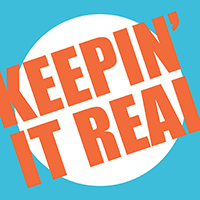Podcast: Play in new window | Download | Embed
Today’s Guest

In this episode you will learn about why sales are the life blood of any company.
Mark Hunter is an author and an expert in sales training.
This is the 91st session of Smart Brand Marketing.
MY BIGGEST TAKEAWAY:
When you sell… focus on the outcome you help others achieve.
Not what you sell or how you sell it.
[sc name=”SBM Lead Magnet 1″]
The Makings of a Great Salesman
Admit it, you have been either wondering what the perfect salesman looks like or have gone out of your way to find them in your local area. The perfect salesman, after all, can make for a great asset your business, right? Of course, there is also the fact that you might want to reach that caliber of salesmanship yourself.
Here’s the thing, though, you’d have better chances of finding the Loch Ness monster than the perfect salesman because the latter has proven to be non-existent. So, if perfection is not possible, what’s your next best target?
The answer, of course, lies in greatness and greatness, in turn, can be achieved in a few certain aspects.
Mastering the Basics

Greatness is not born. It’s the result of years’ worth of practice and mastery to the point that you can practically do everything with ease. As such, what makes the best salesmen stand out from the rest is a mastery of the foundational skills of sales which include:
- Technique – There is more to sales than just convincing a person to buy your stuff. Things like negotiation, preparation and planning for meetings, and follow-ups form part of the sales process and it’s a must for any salesperson to hone their sales technique if they want to remain as competitive as possible.
- Language – Much of the message you carry will be conveyed through what you say and do. The sales language, in fact, does not only cover the verbal part but will also include the non-verbal aspects of communication. In this regard, a salesperson must know the right kind of words to use when negotiating with a client and even master their body language. For instance, you might be quite eloquent as a speaker but your body language is rigid and pushy which can turn off a lot of potential clients. To be effective in sales, a person must convey the right verbal and non-verbal messages.
Alternatively, a great salesperson is able to pick up on the subtle verbal and non-verbal cues with a client and adjust their strategies accordingly. Supposed, for example, that a negotiation is ongoing and you suddenly pick up a sudden shift in tone and body language from your potential client. Would you insist on going through the sales script you have prepared for that client? The answer is clearly no.In most cases, being able to read the subtlest of changes in the way your client speaks and interacts with you can save a lot of negotiations from failing.
- A Curious Nature – Although not exactly a skill per se but the best salesman out there have a naturally curious tendency. In fact, this characteristic can help any salesman in the long run.
The reason for this is that curiosity prevents you from becoming too complacent with your position in the market. Being curious means that you are always wondering if there is a way to push things even further which, in the aspects of sales, will include your offers and your different sales strategies.Naturally, this also makes you sincerely interested in what makes your customers tick. From the problems they face to their purchasing behavior, your curiosity should make you personally invested in helping other people sort their own problems. Keep in mind that a problem-solving mentality is all the rage in consumer behavior today.
These are just a few aspects that you need to cover if in becoming a better salesman. However, what is inside is just part of the equation for greatness. You would also need to connect your innermost qualities and character traits with the most recent challenges that salesmen face.
What Works in Sales Right Now?
Another key factor that separates the best salesmen from the rest is adaptability. The ability to change your strategies to meet current needs while remaining true to your goals has helped a lot of salesmen in the post.
You might not have noticed but there has actually been a massive shift in consumer behavior as of the most recent years which calls for a different breed of sales strategies. Here are some of them:
-
1. The Decision Maker

Remember the Cold War? It was named so because the biggest and most influential players of that campaign did not actually fight each other directly but, instead, used proxies to do the dirty work for them. The same concept is basically put into practice in sales right now where the “potential client’ you are meeting is not actually the decision maker but instead serves as a “middleman” between you and a still-yet-to-be-revealed client.
Given that the potential client and decision maker are two separate entities right now, the best tactic for salesmen today is to identify who the latter is even if they are meeting the former. You have to know who the decision maker is and how they think so that you can craft a strategy that can target that person’s interests.
Of course, the better option is to actually find that decision maker and set up a meeting with them.
-
2. Keeping it Real

Here’s the thing: clients now can also tell if you’re being sincere even in the middle of the sales process. In other words, you yourself have to be able to convey that you are in it to protect their welfare, too, not just to seal a potentially lucrative deal.
The problem here, however, is that it’s easy to send all the wrong signals during a sales process. For instance, coming off too prepared and knowledgeable can make you sound mechanical which can turn off a lot of potential clients. Don’t get the wrong ideas, though. Being prepared is a must, it’s just that you don’t forget to sound sincere and put your customer’s interests first and foremost.
-
3. Urgency

This is not exactly a new strategy but its still quite effective in recent years. The reason for this is that the strategy taps into a very primal need to get whatever is needed before it’s forever gone.
However, what is more effective nowadays in creating a sense of urgency is to make sure that the customer always feels that this is for them to gain an advantage. You just don’t rush them to do something for something’s sake. Convince the customer that your brand is the better choice for solving a problem. Now.
What DOESN’T Work?
Due to changing customer behavior, there are some strategies right now that don’t work well as they used to be or, worse, no longer recommended for application. If possible, you should avoid using these strategies; for the time being, at the very least.
-
1. Emphasizing Benefits Too Much

Don’t get the wrong idea. The selling of something based on the benefits that they offer to a customer is quite effective. It only fails as a strategy if you do it first and forget to tell them why the benefits are important to them.
When selling a product or service based on its benefits, it is better that you change the person’s buying perspective first. This means that you need to convince them that the benefits that your product/service offers can help them the best. This might even include challenging any misconception or preconceived notion they have regarding your service or a problem at hand.
-
2. Engaging in a “Spec War”

It’s quite too tempting to find ways to outperform their product with one added feature. The problem here is that the competition will retaliate by matching your new feature or introducing a better on. This is what is called a Spec War where competitors attempt to outdo each other by offering generally similar products and services in the market.
So what happens when everything in the market looks and functions the same with only a few key differences? The customers will have a hard time deciding which leads to the “no decision” scenario.
-
3. Relying on Personas

A marketing persona is actually quite helpful in crafting your message to different kinds of demographics. The problem here is that no single marketing persona has ever been defined by their need to change, only their thinking patterns and buying behaviors.
Sure, a marketing persona might share the same characteristics as any of your target demographics. But has this persona ever included the fact that even people of the same marketing demographic see and solve certain problems their own way? Instead of relying too much on personas, you should craft your marketing message in such a way to make any customer “shift” from their current mindset to one that is more favorable to accepting whatever you offer.
-
4. PowerPoint Presentations

Again, there is nothing wrong with using PowerPoint slides to deliver your message across to potential clients. It’s how you use it as well as when that matters here. If you are in a more intimate space with only a few people, why then would you use a PowerPoint presentation to convey your message when having a lively chat with people will be more effective here.
Instead of spending too much time creating and improving your PowerPoint slides, you should focus on crafting a compelling story that can resonate the most with your audience. On the flip side, if you really need to use PowerPoint presentation to convey a message, especially for higher-end clients, then using 3D or virtual reality props can really help in compelling such clients to try out whatever you are offering.
Dealing with Rejection

No is perhaps the hardest thing any salesperson will ever hear. It can be mind-boggling how a single syllable and word will not only convey that your message is rejected but future attempts at making a sales deal with the same person are going to fail as well.
Here’s the thing, though: being told NO is something that every salesman has to encounter at some point in their career. If you were only told yes at every deal, how then can you improve on your strategies when the industry experiences a major change? However, what sets the best salesmen from the rest is their ability to cope with rejection.
To start things off, you must never take rejection personally. You’re just told that your offer sucks, not you. This is where a lot of salesmen get stuck, focusing too much on the emotional sting of the rejection. Think of it as an opportunity to go back to the drawing board and find out where exactly in your strategy everything started to fail.
This is where an ability to pay attention to subtle non-verbal cues will come into play. During your negotiation, take note at exactly what point did the client made a shift in tone and body language. This should give you an idea as to why your approach failed.
Next, don’t reject a prospect after they reject you. Being rejected by this person does not exactly mean that that person will never be your client in the future (unless your approach was truly that terrible that that person got so pissed at you, of course). It is better that you develop a relationship with these people as familiarity tends to lower one’s defenses and make them susceptible to future negotiations.
By building relationships, you should feel better about the rejection, turn it around, and make it a launching point for an even better sales opportunity some time later on.
In Conclusion
Sales can be a rather difficult field. However, that does not mean mastering it is beyond possibility. What you need to understand is that the best salesmen out there started out the same as every other salesmen: unsure and with a bit of naiveté on the side.
However, what made them great is their ability to constantly improve or, better yet, innovate. With effort, and a lot of willing yourself to go back up after every rejection, you’d find that you have mastered sales to the point that it has become as natural to you as breathing.
Do you find sales to be challenging? What other strategies do you think will work in the current times? Let us know in the comments below!
References:
https://hbr.org/2006/07/what-makes-a-good-salesman
https://atmanco.com/blog/sales/qualities-good-salesman/
https://www.inc.com/adam-heitzman/6-effective-sales-strategies-to-close-deals-faster.html
https://corporatevisions.com/selling-techniques-2/
https://www.entrepreneur.com/article/222432
TOPICS DISCUSSED
- Scared of saying no
- Social Media
- The definition of sales
- Influence
- What is working now
- Rejection
- Branding
- Media frenzy
- Narrow funnels
- The high price option
MARK IN ACTION
THANK YOU FOR LISTENING!
To get more SBM content sent directly to your device as they become available, you can subscribe on iTunes or Stitcher!
Also, reviews on iTunes are extremely helpful and greatly appreciated! I read each and every one of them, and feel free to share your URL there so I can contact you later on and say thanks!
[sc name=”SBM Lead Magnet 2″]


